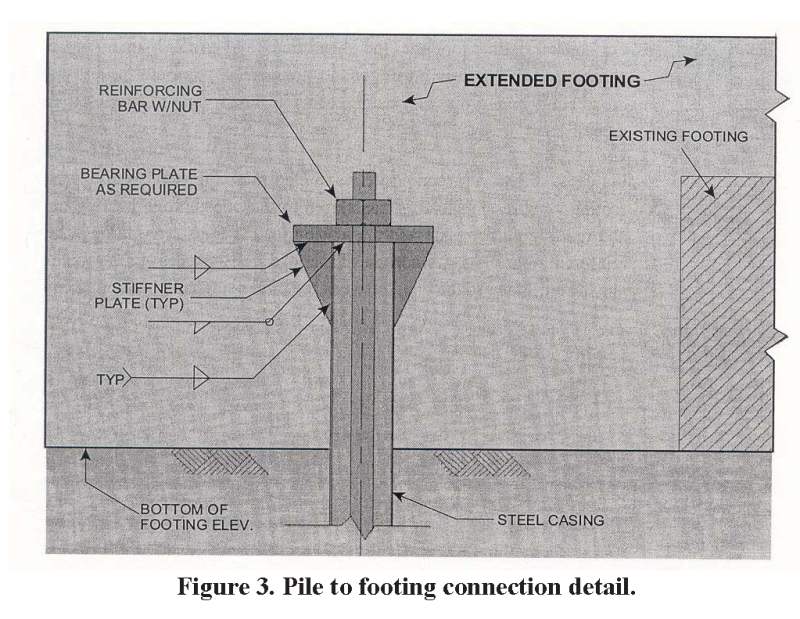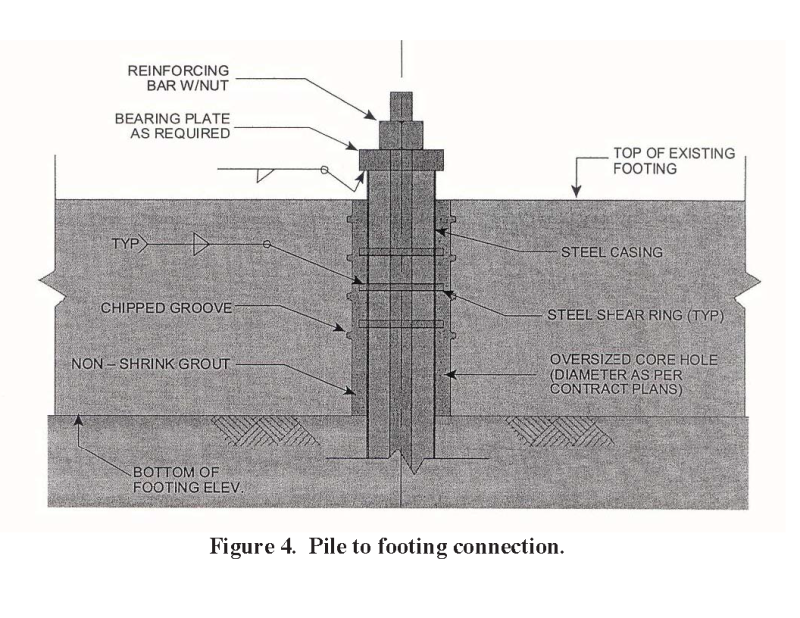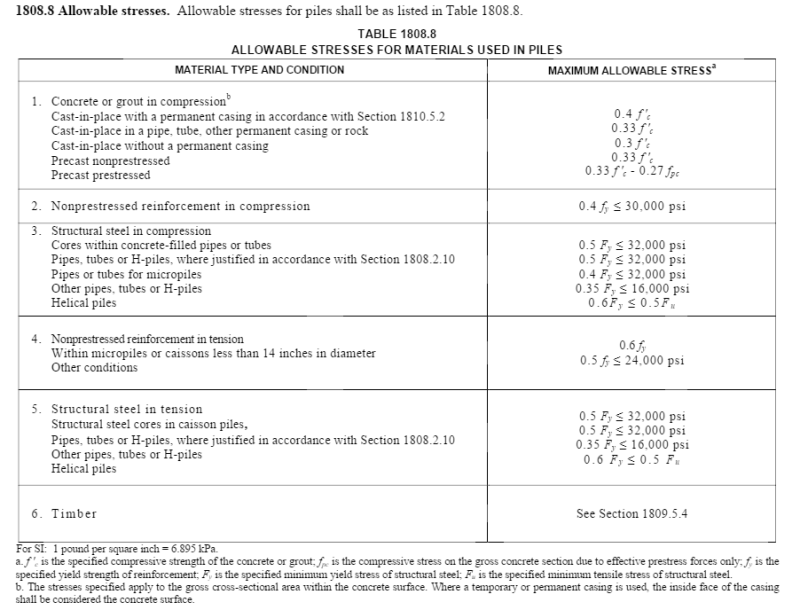bookowski
Structural
- Aug 29, 2010
- 981
This is related to but different than a recent post here.
Pile type: steel pipe casing, center large diameter bar steel core, grout filled (to rock). For example 13-3/8 x 0.5" wall pipe with one #24 center bar, capacity ~400 tons (800 kips).
The design of the pile capacity comes from code allowable stresses. The casing is designed using 0.5Fy (max 32ksi). What is the force transfer mechanism between the casing and the pile cap? The grout makes sense in straight bearing, center core bar can be developed or provided with additional anchor plates, but the casing? There is no way that the contact bearing based on 0.5Fy works for concrete and the embedment isn't sufficient for any kind of friction. Have used these many times but never thought about it. Am I missing something?
Pile type: steel pipe casing, center large diameter bar steel core, grout filled (to rock). For example 13-3/8 x 0.5" wall pipe with one #24 center bar, capacity ~400 tons (800 kips).
The design of the pile capacity comes from code allowable stresses. The casing is designed using 0.5Fy (max 32ksi). What is the force transfer mechanism between the casing and the pile cap? The grout makes sense in straight bearing, center core bar can be developed or provided with additional anchor plates, but the casing? There is no way that the contact bearing based on 0.5Fy works for concrete and the embedment isn't sufficient for any kind of friction. Have used these many times but never thought about it. Am I missing something?



